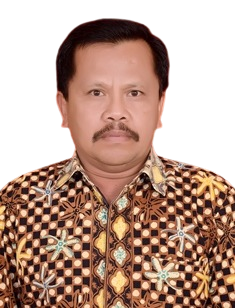Effect of Aloe vera extract for reducing formaldehyde level in tuna fish for halal and thoyyib food
Downloads
This study aims to determine the effect of Aloe vera extract in reducing formaldehyde levels in tuna processed into "pindang" after being given Aloe vera extract. This type of research is experimental. The population in this study was boiled fish sold in the Sawotratap Market. This research was conducted at the Laboratory of Chemistry at the University of Muhammadiyah. Data were analyzed using analysis of variance at a significant level α = 0.05 followed by the Duncan test. The average formaldehyde concentration before being given Aloe vera extract at a concentration of 0% is equal to 23.7 mg / L, and the lowest formalin content in boiled fish with 100% treatment is equal to 5.6 mg / L. Aloe vera extract showed a significant decrease in formaldehyde levels in boiled fish (p <0.05). It can be concluded that the administration of Aloe vera extract is effective in reducing formaldehyde levels.
Adriani KA, Dali S. 2018. Analysis of Formaldehyde preservatives in Wet Anchovy (Stolephorus Sp.) from traditional markets in Makassar City, South SulawesI. Indonesia Chimica Acta. 11(1):1-10.
Ali M. 2016. Konsep makanan halal dalam tinjauan syariah dan tanggung jawab produk atas produsen industri halal . Ahkam. 16(2): 291-306.
Checkoway H, Dell LD, Boffetta P, Gallagher AE, Crawford L, Lees P, Mundt KA. 2015. Formaldehyde exposure and mortality risks from acute Myeloid Leukemia and Other Lymphohematopoietic Malignancies in the US National Cancer Institute cohort study of workers in Formaldehyde Industries, Journal of Occupational and Environmental Medicine. 57(7): 785-794.
Fadhilah A, Ma'ruf W, Rianingsih L. 2013. Efektivitas lidah buaya (Aloe vera) di dalam mereduksi formalin pada fillet ikan bandeng (Chanos chanos forsk) selama penyimpanan suhu dingin. Jurnal Pengolahan dan Bioteknologi Hasil Perikanan, Volume 2(3).
Fatuni Y, Suwandy R, Jaecob A. 2014. Identifikasi kadar histamine dan bakteri pembentuk histamine dari pindang badeng tongkol. JPHPI, pp. 112-118.
Ma'mun, 2006. Teknik pembuatan simplisa dan ekstrak Purwoceng. Laporan Pelaksanaan Penelitian Tanaman Obat dan Aromatik, pp. 314-324.
[Pew Research Center]. 2012. The global religious landscape: a report on the size and distribution of the world's major religious groups as of 2010. Diakses Mei 2020 pada https://assets.pewresearch.org/wp-content/uploads/sites/11/2014/01/global-religion-full.pdf
Rinto A. 2009. Kajian Keamanan Pangan (Formalin, Garam Dan Mikrobia) Pada Ikan Sepat Asin Produksi Indralaya. Jurnal Pembangunan Manusia, Volume 8(2).
Udjiana S. 2008. Upaya pengawetan makanan menggunakan ekstrak lengkuas. Jurnal Teknologi Separasi, Volume 1 (2).
Waharjani. 2015. Makanan yang halal lagi baik dan implikasinya terhadap kesalehan seseorang. Jurnal Komunikasi dan Pendidikan Islam. 4(2): 193-204.
Authors who publish with Journal of halal product and research (JPHR) agree to the following terms:
- The journal allows the author(s) to hold the copyright of the article without restrictions.
- The journal allows the author(s) to retain publishing rights without restrictions.
- The legal formal aspect of journal publication accessibility refers to Creative Commons Attribution (CC BY) 4.0 International License










